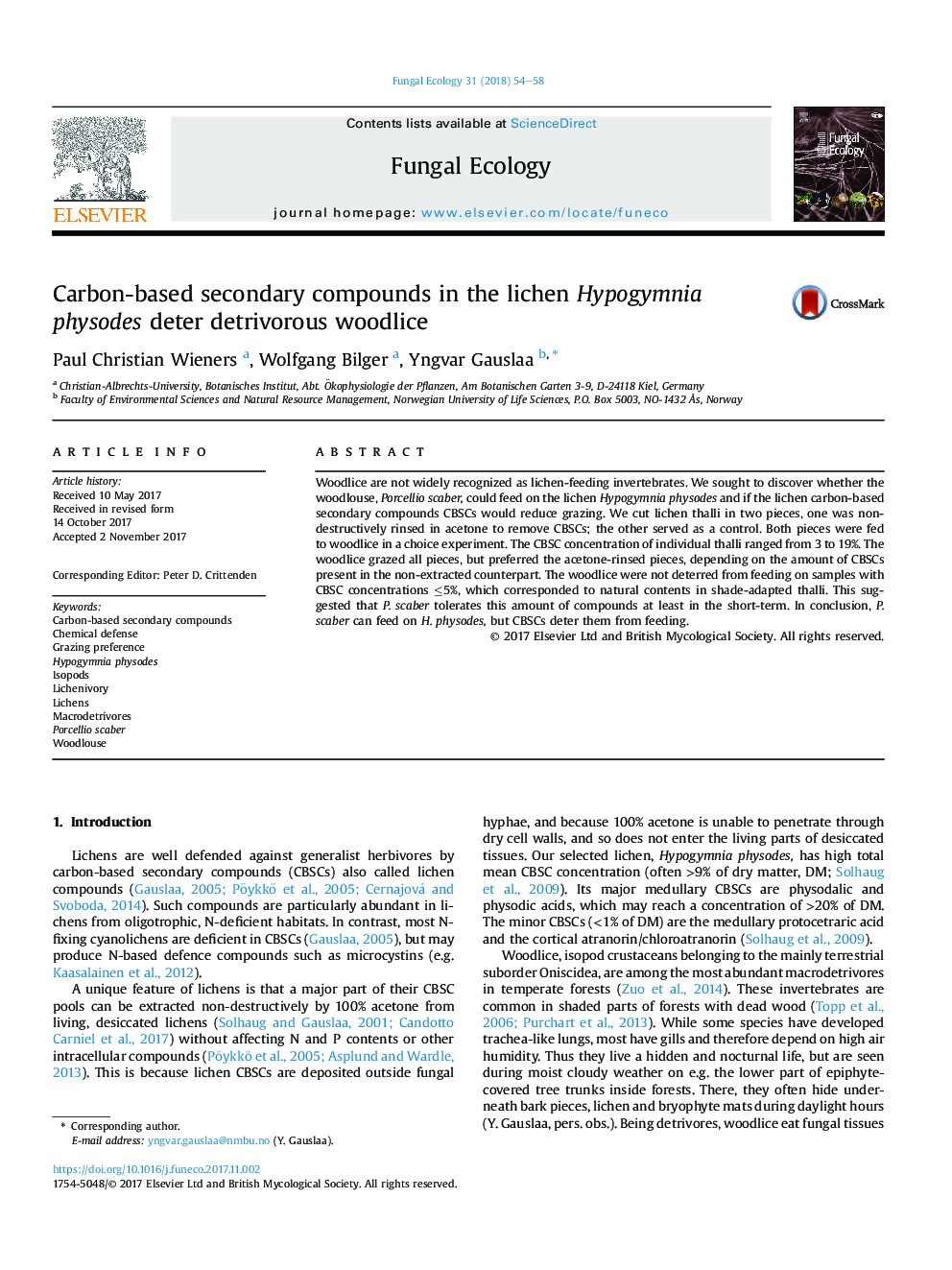| Article ID | Journal | Published Year | Pages | File Type |
|---|---|---|---|---|
| 8384268 | Fungal Ecology | 2018 | 5 Pages |
Abstract
Woodlice are not widely recognized as lichen-feeding invertebrates. We sought to discover whether the woodlouse, Porcellio scaber, could feed on the lichen Hypogymnia physodes and if the lichen carbon-based secondary compounds CBSCs would reduce grazing. We cut lichen thalli in two pieces, one was non-destructively rinsed in acetone to remove CBSCs; the other served as a control. Both pieces were fed to woodlice in a choice experiment. The CBSC concentration of individual thalli ranged from 3 to 19%. The woodlice grazed all pieces, but preferred the acetone-rinsed pieces, depending on the amount of CBSCs present in the non-extracted counterpart. The woodlice were not deterred from feeding on samples with CBSC concentrations â¤5%, which corresponded to natural contents in shade-adapted thalli. This suggested that P. scaber tolerates this amount of compounds at least in the short-term. In conclusion, P. scaber can feed on H. physodes, but CBSCs deter them from feeding.
Related Topics
Life Sciences
Agricultural and Biological Sciences
Ecology, Evolution, Behavior and Systematics
Authors
Paul Christian Wieners, Wolfgang Bilger, Yngvar Gauslaa,
